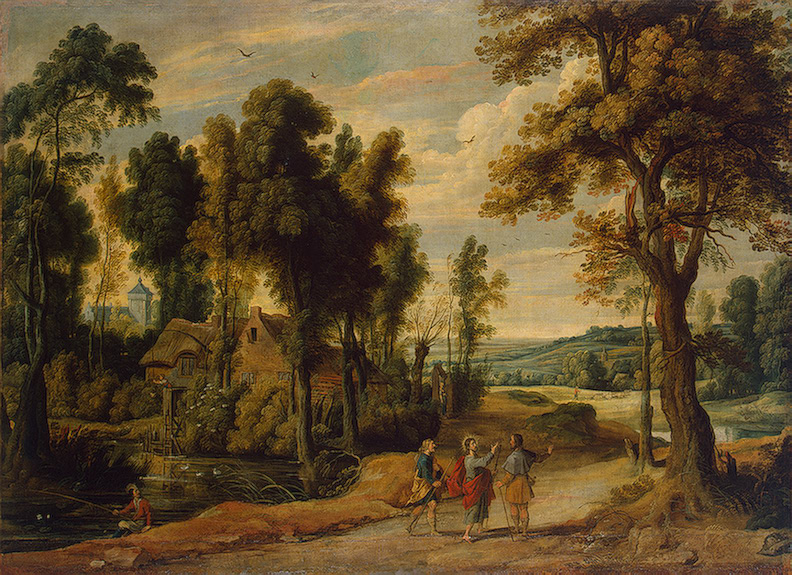Do we walk this Pilgrimage of life alone? Or perhaps alone with God? On the Camino in Spain, I frequently hear young and old people say “Well, everyone has his own Camino!” Indeed, St. John Paul II said that each person is a particular image and likeness of God. So, yes—that means everyone’s pilgrimage through life is equally particularized and beautiful. But I think the phrase “Everyone has his own Camino” would have confused JPII a little since he came from a tight-knit Polish family and group of friends, seminarians…notwithstanding the tremendous loss he suffered.
Furthermore, that phrase would have never been heard on this Spanish pilgrimage 800 years ago. Why? Because they always went in communities and families. This Protestant-individualization of walking through life “Me and Jesus” is actually relatively new. Even in the early Church writings I see the Church mentioned as much as Christ was mentioned.
I’ve made some serious mistakes of thinking I could walk through my priesthood in lone-ranger mode. For example, I was betrayed by a brother priest. When people found this out, he quickly ascribed his own decision to his superiors, and later to his subordinates. I had no defense system against these lies because I didn’t control the communications. I wimped out in self-defense.
But my bigger mistake was having jumped-in alone years ago. St. Thomas Aquinas defines pride as biting off more than you can chew. This was exactly my sin in waiting so long to join a community that believes the same things as I do, which I’m finally seeking.
Archbishop Chaput would always say, “Your faith is personal, but never private.” So also, everything on this Camino of Life remains communal—personalized but not private. I now want to live a public witness of faith—not just helping others—but in need of others I can trust, too. This I have learned, being sick on pilgrimage.
Yes, even the disciples were sent out only two by two.
In Luke 24, Jesus is found walking the way to Emmaus not with one, but with two “Cleopine” disciples. There is a particularization to each person’s “Life-Pilgrimage,” indeed—but never a total isolation…not even for those called to the hermetic life. (Hermits must be those who live in the deepest communion with the Church triumphant, militant, and suffering.)
This communal aspect of our “Life-Pilgrimage” is seen in the painting above, Road to Emmaus, by Jan Wildens. Notice that Cleopas is not walking with Jesus alone. It is three of them, just as in Luke 24. Some believe Cleopas’ fellow disciple of the Lord was Cleopas’ wife!
In any case, Emmaus starts this way: Christ is already risen from the dead, but the couple is in a state of despondency. Christ reveals Himself and their hearts burn. They long…but only later are they completed in Him.
One of the strangest lines in the account is when Jesus “acted as if He were going farther, but they urged Him strongly, saying, ´Stay with us, for it is toward evening and the day is now far spent.´” (Lk 24:28-29) Why did Jesus act as if He were going to keep going? I haven´t read the Church Fathers on this, but I’ll give my own guess:
He could go far beyond us. He could leave us in the dust, but He chooses to remain in the Eucharist and in the saints to walk this path with us. He shows us we have to wait for others.
Jesus shows the apostles the means not to stop suffering, but to suffer well when He sends the Holy Ghost. He promises to walk with them, not to give them all the answers about why they “have here no lasting city.” (Hb 13:14) Since mankind’s fall out of paradise, it never was meant to be lasting, anyway.
This is why St. Peter reminds us strangers and sojourners that we shouldn´t get attached to a titillating, crumbling city on earth: “Beloved, I urge you, as sojourners and exiles, to abstain from the passions of the flesh, which wage war against your soul…Christ also suffered for you, leaving you an example, so that you might follow in His steps.” (1 Pt 2:11,21.)
That word steps is so important for pilgrimage theology. The avoidance of illicit pleasures isn’t just extinguishing desire, à la Buddhism, so our hopes for more, say, chocolate don’t go unfulfilled. Rather, it’s about the simple avoidance to attachment to Babylon when the Heavenly Jerusalem awaits. Yes, have children in Babylon! Enjoy the fruit of the land! But Jerusalem, not Babylon, is your home.
To launch from Babylon to Jerusalem, we ironically need to go about it with friends—despite the danger of attachments to unhealthy friendships. Yes, we must walk it with Christ and others in order to not become attached to the sweet, ephemeral, glittery rivers of Babylon (read: Madison Ave., or our own egos.)
What is this Heavenly Jerusalem? That will be part 5…A few more steps before we make it there (scheduled for our arrival in Santiago.)
